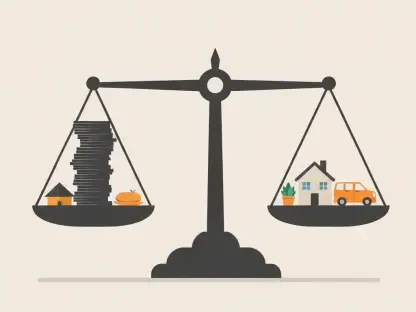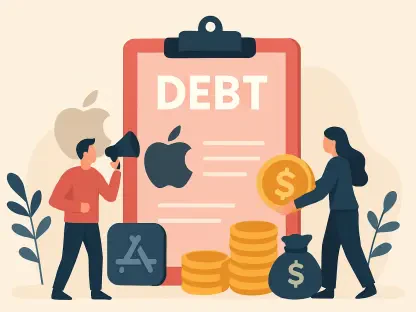Peer-to-peer (P2P) payment services have become an integral part of our digital world, allowing users to easily and quickly send money to others without the need for cash or physical checks. Whether you need to pay someone back for a meal or send money to a friend, P2P platforms like Venmo, Zelle, and Cash App have made these transactions more convenient than ever. Despite their popularity, questions around the safety of these platforms often arise. Additionally, with numerous options available, consumers may be wondering which platform suits their needs best. In this article, we’ll delve into how P2P payments work, compare the most popular services, and discuss their safety and speed.
1. How P2P Payments Work
Once you sign up for a P2P payment platform, here’s the process you’ll need to go through before you can make or receive a payment:
First, you will need to link a personal bank account, debit card, or credit card, depending on the platform’s requirements. This step is crucial as the linked account is the source from which funds will be drawn and sent to the recipient. Most platforms allow you to link multiple accounts, giving you flexibility in choosing the source of funds for different transactions.
Next, you will need to locate the recipient using their username, email, or phone number, which varies based on the P2P platform you’re using. Each platform has its method for finding and verifying recipients, making this step necessary to prevent errors. Ensure that you’re sending money to the right person to avoid any complications.
After finding the recipient, you will input the amount you want to send and confirm the transaction. This step usually involves reviewing the details one last time before confirming to ensure everything is correct. Some platforms offer additional options at this stage, such as adding a description or note about the payment purpose.
The funds are then transferred from your linked account to the recipient’s P2P account. The transfer process varies between platforms, with some offering nearly instant transfers while others might take a bit longer. However, the recipient will typically receive a notification once the funds hit their P2P account.
Lastly, the recipient might need to take an additional step to transfer the funds from their P2P account to their linked bank account. This step can vary in duration, ranging from a few seconds to several business days, depending on the platform and the type of transfer chosen. Instant transfers often come with a fee, while standard transfers are usually free.
2. Popular P2P Payment Platforms
Several P2P payment services have gained popularity due to their unique features and user-friendly interfaces. Here are some of the most widely used platforms:
Zelle: This P2P service is integrated into many banking apps, including Bank of America, Chase, and Wells Fargo. Zelle allows you to send money directly to another Zelle user’s bank account using their email or phone number, with transfers typically completed the same day. It’s especially useful for those who prefer bank-managed services and need quick transfers.
PayPal: Known for its global reach, PayPal is a versatile P2P service that supports international payments and different currencies. PayPal users can make instant transfers to bank accounts for a fee or opt for free standard transfers, which generally take one to three business days. PayPal also offers Xoom, a service for converting foreign currency, which makes it a strong choice for international transactions.
Venmo: Owned by PayPal, Venmo is a popular mobile P2P service that allows users to send money and split expenses, often between friends. Venmo supports instant transfers for a fee and offers free standard transfers that take one to two business days. It’s frequently used for casual payments, such as dividing a restaurant bill.
Cash App: A mobile P2P service that allows users to send money, invest in stocks and cryptocurrencies, and use a free debit card. Cash App supports instant transfers for a fee, whereas standard transfers are free but may take one to three business days. It is a comprehensive financial tool offering more than just payment options.
Apple Cash: This service functions as a digital card within the Apple Wallet app, enabling iPhone users to send money and make purchases using their Apple Cash balance. Transfers to a bank account typically take one to three business days. Apple Cash is an excellent option for those who are embedded in the Apple ecosystem.
3. Costs Associated with P2P Payments
Most P2P payment services are free to use for standard transactions, but additional fees can apply under certain conditions. Understanding these costs can help you choose the best platform for your needs and avoid unexpected charges.
Instant Transfers: Many P2P apps offer instant transfers to linked bank accounts for a fee. For instance, PayPal charges 1.75% of the transferred amount, while Venmo’s fee is 1.75% with a minimum of $0.25 and a maximum of $25. These instant transfer fees can be justified when you need immediate access to your funds, but it’s worth evaluating if the cost is necessary for your situation.
Debit or Credit Card Transactions: Sending money using a linked debit or credit card can also incur fees. For example, Venmo charges a 3% fee for sending payments from a credit card. Conversely, transfers from linked bank accounts are usually free, making them a preferred option for cost-conscious users.
International Transactions: Sending money internationally often attracts additional fees. PayPal, for example, charges 5% plus an international fee between $0.99 and $4.99, along with possible currency conversion fees. These costs can add up, so they should be considered when sending money to recipients outside the United States.
By being aware of these potential costs, you can make informed decisions about which platform to use and when it’s worth paying extra for faster or different types of transactions.
4. Best Platforms Based on User Needs
Selecting the best P2P payment platform depends largely on your specific needs and the services used by your contacts. While some users prefer the convenience of bank-managed services, others might prioritize platforms with broader functionality or international options.
Zelle: Best for users who want seamless transfers between bank accounts, Zelle is integrated directly into many banking apps, ensuring a high level of security and convenience for domestic transactions.
PayPal: Ideal for international transactions and users who deal with multiple currencies, PayPal offers extensive global reach and additional services like Xoom for currency conversion, making it a versatile option for global users.
Venmo: Popular among friends for casual payments, Venmo is known for its social feed that allows users to share and comment on transactions. It’s especially useful for splitting costs and social payments within the U.S.
Cash App: Besides facilitating P2P payments, Cash App also allows users to invest in stocks and cryptocurrencies, making it a great option for those interested in managing their finances more comprehensively.
Apple Cash: Tailored for iPhone users, Apple Cash benefits those who are already accustomed to the Apple ecosystem, providing an easy way to send and receive money and make purchases using Apple Wallet.
5. Safety of P2P Payments
While P2P payment apps offer tremendous convenience, they also carry certain risks. Despite regulations by bodies like the Consumer Financial Protection Bureau, enforcement of consumer protections can be inconsistent, and these services can be prone to scams and errors.
Security Measures: Many P2P services use encryption and secure socket layer (SSL) technology to protect sensitive transactions. Encryption turns your data into complex codes, making it difficult for unauthorized parties to intercept, while SSL ensures that only the intended recipient can access your information. Two-factor authentication is also commonplace, providing an additional layer of security against unauthorized access.
Risks and Recommendations: Despite these security measures, the risk of scams persists. Users are often held responsible for sending money to scammers. Consumer advocate Linda Sherry advises using P2P payments only with trusted individuals and remaining vigilant against potential fraud. If something seems too good to be true, it probably is.
6. Safeguarding Transaction Information
To ensure the safety of your transaction information, P2P platforms employ advanced technologies. Encryption and SSL technology protect your data, and some services even use blockchain for increased transparency and traceability. Blockchain technology, often associated with cryptocurrencies, offers an immutable and transparent ledger of all transactions, helping prevent tampering and fraud.
Moreover, artificial intelligence is being incorporated into fraud detection systems, identifying and preventing suspicious activity more effectively. AI algorithms can analyze patterns and flag unusual behavior, safeguarding users from potential scams.
7. Protection from Scams
P2P platforms adopt several strategies to protect users from scams. They often provide guidelines on common scam tactics and how to avoid them. Additionally, many utilize algorithms and AI to flag and block suspicious activity. Dedicated security teams may also investigate potential fraud to protect users.
These platforms offer transaction dispute processes, allowing users to report suspicious transactions. Under the Electronic Funds Transfer Act, users have the right to dispute unauthorized transactions. However, while these measures significantly lower scam risks, they do not eradicate them entirely. Users should exercise caution when using P2P payments.
8. Speed of P2P Payments
The speed of P2P payments can vary, ranging from a few seconds to several days. Services like Zelle are known for their near-instantaneous transfers directly to bank accounts. On the other hand, platforms requiring manual fund transfers, like PayPal or Cash App, may take a few business days, depending on the chosen transfer type.
Many P2P apps offer a choice between standard (free but slower) and instant (fee-based but quicker) transfers. Depending on the urgency of your transaction, you can select the option that best suits your needs. However, even standard transfers generally offer faster processing times than traditional payment methods.
9. Alternatives to P2P Payments
While P2P payments provide a quick and convenient method of transferring money, several other payment methods can be considered:
Direct Wire Transfers: Suitable for sending large amounts quickly, direct wire transfers are an old but reliable method. However, higher fees can be a drawback, often going up to $50 per transaction.
Checks: As a traditional method, checks may take several days to clear and carry a risk of being lost or stolen. While they still serve certain purposes, they lack the immediacy and convenience of digital payments.
Money Orders: Prepaid paper payment methods like money orders are another alternative, functioning similarly to checks in terms of cashing and depositing but providing prepaid assurance.
Online Bill Pay: Although this is convenient for paying regular bills, it cannot be utilized for sending money to individuals, limiting its use for personal transactions.
Each of these alternatives has its advantages and limitations, making it essential to choose based on the specifics of the transaction and personal preferences.
Enhancing Your Digital Payment Experience
Peer-to-peer (P2P) payment services have become essential in today’s digital world, enabling users to effortlessly transfer money to others without the need for cash or physical checks. Whether you need to reimburse a friend for dinner or send money to a family member, P2P platforms like Venmo, Zelle, and Cash App make these transactions more convenient than ever before. However, despite their widespread use, concerns about the safety of these platforms often arise. Additionally, with a plethora of options available, consumers may find themselves wondering which platform best meets their needs.
In this article, we’ll explore the workings of P2P payments, compare the most popular services, and examine their safety and speed. Understanding how these platforms operate can help users make informed decisions about which service to use. Factors such as transaction fees, transfer limits, and the ease of use will be considered to provide a comprehensive overview. Moreover, we’ll discuss the security measures these platforms implement to protect users from fraud and unauthorized transactions.
As technology continues to evolve, P2P payment services are likely to become even more integrated into our daily lives. By staying informed about the advantages and potential risks, users can enjoy the convenience of these digital tools while keeping their financial information secure.









